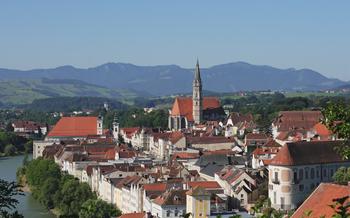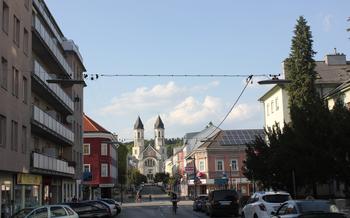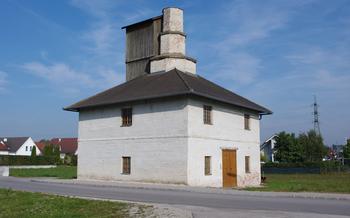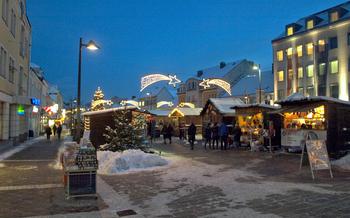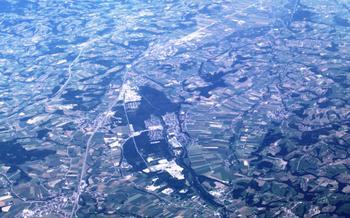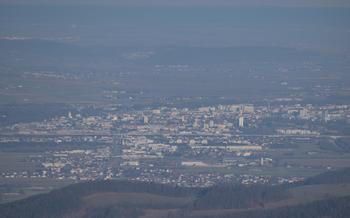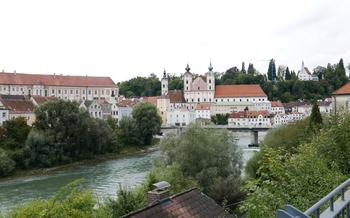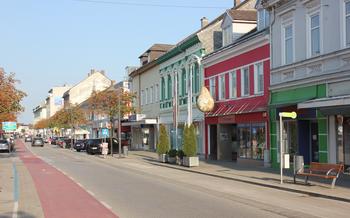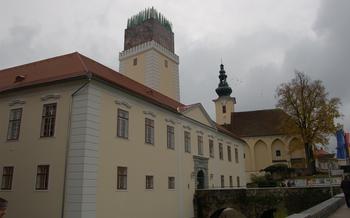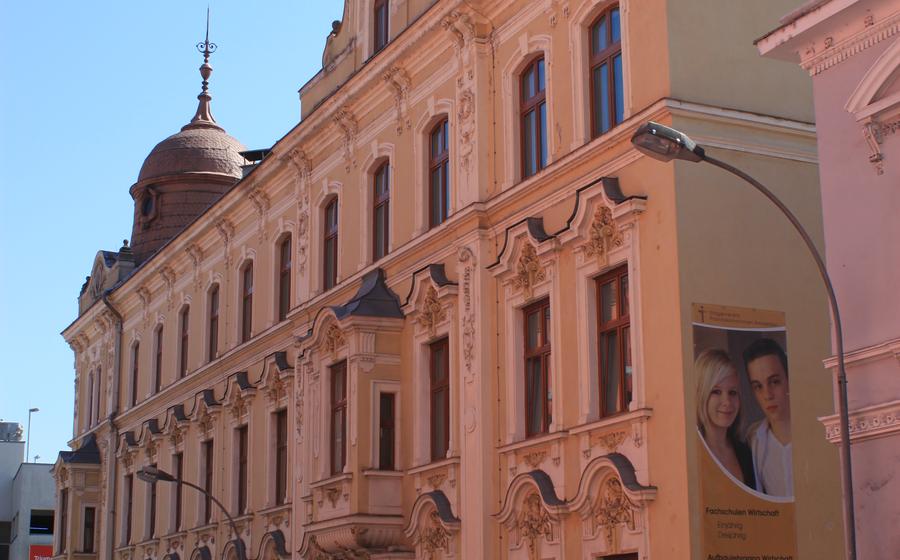
Ötscher Caves
- The Ötscher Caves: A Hidden Gem in Amstetten
- Exploring the Upper Cave
- Venturing into the Lower Cave
- Learning about the Ötscher Caves' History
- Spotting the Unique Cave Fauna
- Witnessing the Spectacular Dripstone Formations
- Taking a Guided Tour of the Ötscher Caves
- Marveling at the Caves' Sculptures and Reliefs
- Capturing the Beauty of the Ötscher Caves
- Experiencing the Ötscher Caves for Families
- Combining Your Cave Visit with Other Activities
- Respecting the Ötscher Caves' Environment
- Planning Your Trip to Amstetten
- Insider Tip: The Ötscher Caves at Night
The Ötscher Caves: A Hidden Gem in Amstetten
Nestled in the heart of the Ötscher-Tormäuer Nature Park, the Ötscher Caves are a stunning natural wonder that invites visitors to explore a subterranean realm of awe-inspiring beauty. With a history dating back millions of years, these caves have captivated the imaginations of adventurers, scientists, and nature enthusiasts alike.
Geological forces have sculpted the Ötscher Caves into a labyrinth of chambers, tunnels, and galleries, each adorned with a mesmerizing array of stalactites, stalagmites, and other dripstone formations. These ethereal structures, illuminated by the soft glow of electric lights, create a magical atmosphere that transports visitors to another world.
Archaeological excavations have revealed evidence of human presence in the Ötscher Caves dating back to prehistoric times. Stone tools, pottery fragments, and animal bones suggest that these caves were once inhabited by early humans who sought shelter and sustenance within their depths.
Guided tours led by experienced guides provide visitors with an immersive and educational experience. These tours delve into the fascinating history, geology, and ecology of the Ötscher Caves, offering insights into the formation of the caves, the unique cave fauna, and the role of the caves in human history.
Exploring the Upper Cave
The entrance to the Ötscher Caves is situated in a picturesque forest, and the path leading to it offers enchanting views of the surrounding landscape. Once inside, visitors are greeted by the impressive first chambers, adorned with stunning dripstone formations.
Proceeding further into the cave, you will reach the awe-inspiring Hall of the Giants, where stalactites and stalagmites of colossal proportions create a majestic spectacle. The Dragon's Mouth, a narrow passage adorned with sharp rock formations, adds an element of intrigue to the tour.
The highlight of the Upper Cave is undoubtedly the Devil's Kitchen, a vast chamber filled with intricate and colorful cave formations. Here, visitors can marvel at the vibrant hues and intricate shapes created by mineral deposits over millions of years.
Venturing into the Lower Cave
The Lower Cave, also known as the "Große Ötscherhöhle," is a more challenging and adventurous section of the Ötscher Caves. It is accessible through a narrow passageway that leads to a series of tunnels and chambers. Visitors must be prepared to crawl, climb, and squeeze their way through tight spaces to explore this section.
The Lower Cave is home to several unique and impressive features. One of the highlights is the underground lake, which is the largest body of water in the entire cave system. The lake is crystal clear and reflects the surrounding rock formations, creating a breathtaking sight.
Another highlight of the Lower Cave is the Crystal Chamber, which is filled with sparkling calcite crystals. The crystals are a result of mineral deposits that have built up over thousands of years, forming intricate and beautiful formations.
Finally, the Lower Cave is home to the Echo Chamber, which is known for its remarkable acoustics. Visitors can experiment with their voices and create echoes that reverberate throughout the chamber. The Echo Chamber is a testament to the unique and fascinating properties of the Ötscher Caves.
Learning about the Ötscher Caves' History
The Ötscher Caves have a rich and fascinating history that dates back thousands of years. Archaeological evidence suggests that the caves were inhabited by prehistoric humans as early as the Stone Age. In the Middle Ages, the caves were used as a refuge by local villagers during times of war and persecution.
The first written records of the Ötscher Caves date back to the 16th century. In 1552, the Austrian physician and naturalist Georg Agricola published a book that included a description of the caves. In the 17th century, the caves were visited by several prominent figures, including the Holy Roman Emperor Leopold I and the French philosopher René Descartes.
In the 19th century, the Ötscher Caves became a popular tourist destination. The first guided tours were offered in 1850, and the caves quickly became one of the most popular attractions in the region. In 1872, the caves were designated as a UNESCO World Heritage Site.
During World War II, the Ötscher Caves were used as a hiding place by the local population. The caves were also used by the Nazis to store looted artwork and treasures. After the war, the caves were returned to the Austrian government and reopened to the public.
Today, the Ötscher Caves are one of the most popular tourist attractions in Austria. The caves are open to the public year-round and offer a variety of guided tours. Visitors can learn about the history of the caves, see the archaeological findings, and marvel at the stunning dripstone formations.
Spotting the Unique Cave Fauna
The Ötscher Caves are home to a variety of unique and fascinating cave-dwelling creatures that have adapted to the dark, humid environment. One of the most notable species is the blind cave beetle, which has evolved to have no eyes and long antennae to navigate the darkness. Another common inhabitant is the cave spider, which spins intricate webs to catch its prey. The cave cricket, with its long, slender body and jumping ability, can be seen scurrying along the cave walls. Finally, the cave salamander, with its smooth, eel-like body and gills, can be spotted near the underground streams. These creatures play a vital role in the cave ecosystem, contributing to the decomposition of organic matter and serving as a food source for other animals.
Witnessing the Spectacular Dripstone Formations
As you wander through the Ötscher Caves, you can't help but be awestruck by the stunning dripstone formations that adorn the walls, ceilings, and floors. These intricate and delicate structures, primarily composed of calcite, have been shaped over thousands of years by the relentless dripping of water through the limestone rock.
-
Stalactites and Stalagmites: The most iconic dripstone formations are the stalactites and stalagmites. Stalactites are the icicle-like formations that hang from the ceiling, while stalagmites rise from the floor to meet them. Over time, these two formations can merge to create columns, pillars, and other unique shapes.
-
Flowstones and Curtains: Flowstones are thin, sheet-like formations that cascade down the walls like frozen waterfalls. Curtains, on the other hand, are similar to flowstones but are more delicate and resemble fabric drapes.
-
Helictites and Straws: Helictites are rare and fascinating formations that twist and turn in unusual directions, resembling corkscrews or antlers. Straws are thin, delicate formations that resemble hollow tubes or straws.
-
Cave Pearls: Cave pearls are small, spherical formations that are formed when water droplets become trapped in a cavity and rotate, accumulating layers of calcite. These pearls can range in size from a few millimeters to several centimeters.
Taking a Guided Tour of the Ötscher Caves
To make the most of your visit to the Ötscher Caves, it is highly recommended to join a guided tour. The experienced guides will lead you through the caves, sharing their knowledge of the geology, history, and folklore associated with this underground wonder. They will point out the most impressive formations and tell you stories that will bring the caves to life.
There are different types of tours available, ranging from short introductory tours to longer and more in-depth exploration. The guides are multilingual, so you can choose the language that you are most comfortable with. It is advisable to book your tour in advance, especially during peak season, to avoid disappointment.
The Ötscher Caves are a treasure trove of natural and cultural wonders, and a guided tour is the best way to unlock their secrets. Let the knowledgeable guides take you on a journey through time and discover the hidden beauty of these magnificent caves.
Marveling at the Caves' Sculptures and Reliefs
Throughout the Ötscher Caves, visitors can admire a variety of sculptures and reliefs that enhance the already captivating atmosphere. One of the most notable works is the Ötscher Madonna, a delicate sculpture of the Virgin Mary carved into a stalagmite. The relief of St. George and the Dragon depicts a legendary battle between the saint and a fearsome dragon, while the sculptures of the cave gnomes add a touch of whimsy and intrigue. These artistic creations, combined with the natural beauty of the cave formations, elevate the Ötscher Caves to a true underground art gallery.
Capturing the Beauty of the Ötscher Caves
The Ötscher Caves offer a feast for the eyes, not only for cave enthusiasts but also for photography aficionados. The intricate rock formations, the play of light and shadow, and the subterranean wonders create an otherworldly spectacle that demands to be captured. However, cave photography presents unique challenges, requiring specialized equipment, technical expertise, and an artistic eye.
To fully capture the magic of the Ötscher Caves, a sturdy tripod is essential for stability. A wide-angle lens is ideal for capturing the expansive chambers and sweeping vistas, while a macro lens allows you to zoom in on the delicate details of stalactites and stalagmites. A flashlight or headlamp is a must for illuminating the dimly lit corners and creating dramatic effects. Experiment with different angles, perspectives, and lighting techniques to bring out the hidden beauty of the caves.
For optimal results, plan your visit during the early morning or late afternoon hours when the natural light filters into the caves, creating a soft and diffused glow. Patience is key, as long exposure shots are often necessary to capture the full depth and richness of the cave's interior. Use a remote shutter release to minimize camera shake and ensure sharp images.
Once you have captured your stunning cave photos, don't forget to share them with the world. Post your images on social media using relevant hashtags to connect with other cave enthusiasts and inspire them to embark on their own subterranean adventures. Your photographs can serve as a testament to the beauty and wonder of the Ötscher Caves, encouraging others to explore this hidden gem for themselves.
Experiencing the Ötscher Caves for Families
The Ötscher Caves offer a fantastic experience for families with children of all ages. Special family-friendly tours are designed to engage and educate young visitors, making the caves accessible and enjoyable for the whole family.
Guided tours tailored for families include interactive elements, storytelling, and hands-on activities that bring the caves' history and geology to life. Kids can learn about the fascinating cave creatures, solve riddles, and participate in treasure hunts, making the tour an exciting adventure.
Outside the caves, the Ötscher Caves Adventure Playground provides a fun and safe space for kids to run, climb, and explore. The playground features a variety of play structures, including swings, slides, climbing nets, and a sandpit, offering a welcome break after the cave tour.
The cave shop offers a selection of souvenirs, toys, and educational materials related to the caves, allowing families to take home a piece of their adventure. From plush cave creatures to replicas of cave formations, the shop provides a range of mementos to cherish the memory of their visit.
Combining Your Cave Visit with Other Activities
The Ötscher Caves are just one of the many attractions that the Ötscher-Tormäuer Nature Park has to offer. After your cave tour, you can explore the park's many hiking trails, which wind through forests, meadows, and past waterfalls, offering stunning views of the surrounding mountains.
The Ötscher Museum, located in the nearby town of Lackenhof, is another great place to learn about the region's natural and cultural history. The museum exhibits include fossils, minerals, and artifacts from the Ötscher Caves, as well as information about the park's flora and fauna.
The town of Amstetten, a short drive from the caves, is worth a visit for its historic center, which features a beautiful town square, a Gothic church, and a Renaissance castle. Amstetten is also home to several museums, including the Amstetten Art Museum and the Amstetten Museum of Local History.
If you're visiting the Ötscher Caves during the summer, be sure to check out one of the many local festivals, such as the Ötscherfest, which takes place in August and features traditional music, dancing, and food.
Respecting the Ötscher Caves' Environment
The Ötscher Caves are a natural wonder that must be respected and preserved for future generations. Visitors should follow the marked paths and avoid touching the cave formations, as even the slightest touch can damage the delicate structures. It is important to dispose of waste properly in the designated bins to prevent pollution of the cave environment. The caves are home to a variety of cave-dwelling creatures, so visitors should avoid disturbing the wildlife by making excessive noise or using flashlights. By following these simple guidelines, visitors can help protect this fragile underground ecosystem.
Planning Your Trip to Amstetten
Amstetten offers a variety of accommodation options to suit every budget and preference. From cozy guesthouses and family-run hotels to modern apartments and luxurious resorts, you'll find something that meets your needs. For a truly immersive experience, consider staying in one of the historic buildings in the town center, where you can soak up the charm and atmosphere of this vibrant town.
When it comes to dining, Amstetten has something to offer everyone. From traditional Austrian cuisine to international flavors, you'll find a wide range of restaurants, cafes, and bars to choose from. Be sure to sample some of the local specialties, such as the "Mostviertler Knödel" (dumplings) or the "Ötscherforelle" (trout).
Getting around Amstetten is easy, thanks to its well-connected public transportation system. Buses and trains run regularly, making it convenient to explore the town and its surroundings. If you prefer to explore at your own pace, renting a bicycle is a great option, as Amstetten has an extensive network of bike paths.
The Amstetten Tourist Information Center is an excellent resource for planning your trip. They can provide you with maps, brochures, and recommendations on what to see and do in the area. They can also assist you with booking tours, accommodation, and transportation.
Insider Tip: The Ötscher Caves at Night
For a truly unforgettable experience, consider joining one of the special night tours offered by the Ötscher Caves. These tours take place on select dates throughout the year and provide a unique opportunity to explore the caves under the cloak of darkness. With only the dim light of headlamps to guide you, you'll feel like you're on an adventure of your own. The eerie silence and the heightened sense of mystery create an atmosphere that is both thrilling and enchanting. You'll get to see the caves from a completely different perspective and discover hidden corners that remain inaccessible during the day. Booking your night tour in advance is highly recommended, as spaces are limited. So, if you're looking for an extraordinary experience that will leave you with lasting memories, don't miss the chance to visit the Ötscher Caves at night.
